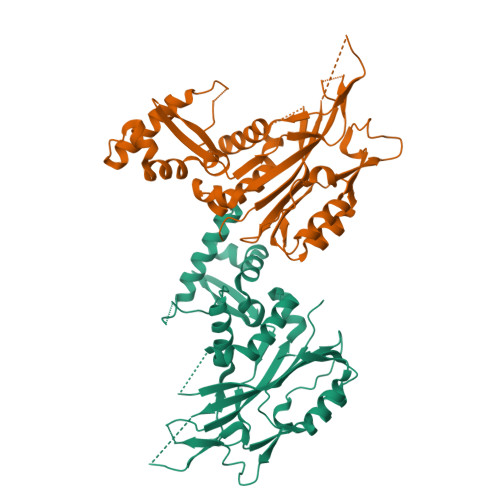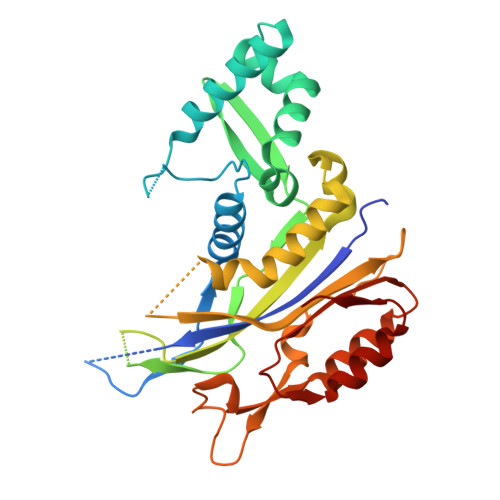Structural characterization of the type I-B CRISPR Cas7 from Thermobaculum terrenum.
Seo, P.W., Gu, D.H., Kim, J.W., Kim, J.H., Park, S.Y., Kim, J.S.(2023) Biochim Biophys Acta Proteins Proteom 1871: 140900-140900
- PubMed: 36682394
- DOI: https://doi.org/10.1016/j.bbapap.2023.140900
- Primary Citation of Related Structures:
7XZ3 - PubMed Abstract:
Clustered regularly interspaced short palindromic repeats (CRISPR) in many prokaryotes functions as an adaptive immune system against mobile genetic elements. A heterologous ribonucleoprotein silencing complex composed of CRISPR-associated (Cas) proteins and a CRISPR RNA (crRNA) neutralizes the incoming mobile genetic elements. The type I and III silencing complexes commonly include a protein-helical backbone of several copies of identical subunits, for example, Cas7 in the type I silencing complex. In this study, we structurally characterized type I-B Cas7 (Csh2 from Thermobaculum terrenum; TterCsh2). The revealed crystal structure of TterCsh2 shows a typical glove-like architecture of Cas7, which consists of a palm, a thumb, and a finger domain. Csh2 proteins have 5 conserved sequence motifs that are arranged to form a presumable crRNA-binding site in the TterCsh2 structure. This crRNA binding site of TterCsh2 is structurally and potentially comparable to those observed in helix-forming Cas7 structures in other sub-types. Analysis of the reported Cas7 structures and their sequences suggests that Cas7s can be divided into at least two sub-classes. These data will broaden our understanding on the Cascade complex of CRISPR/Cas systems.
Organizational Affiliation:
Department of Chemistry, Chonnam National University, Gwangju, South Korea.



















